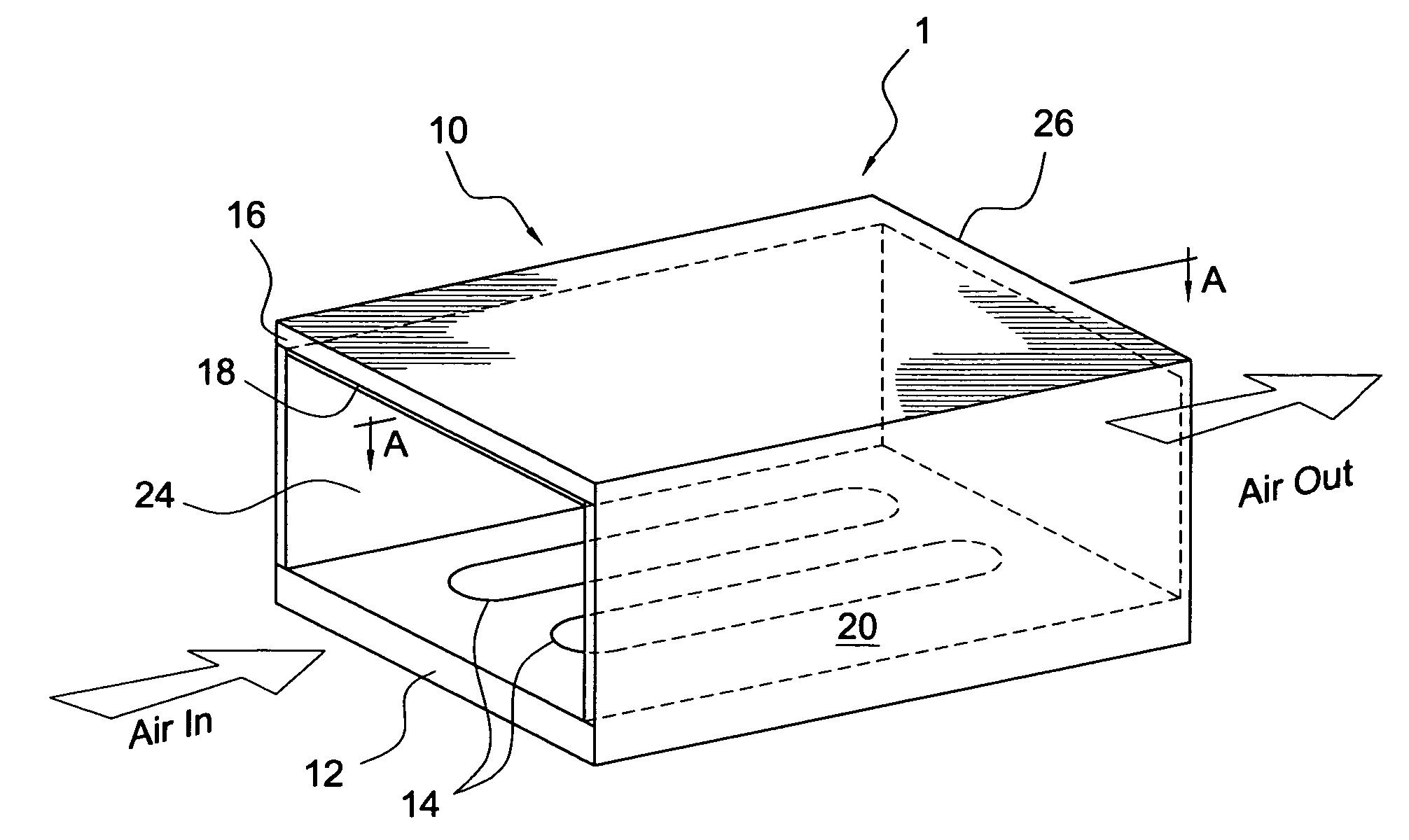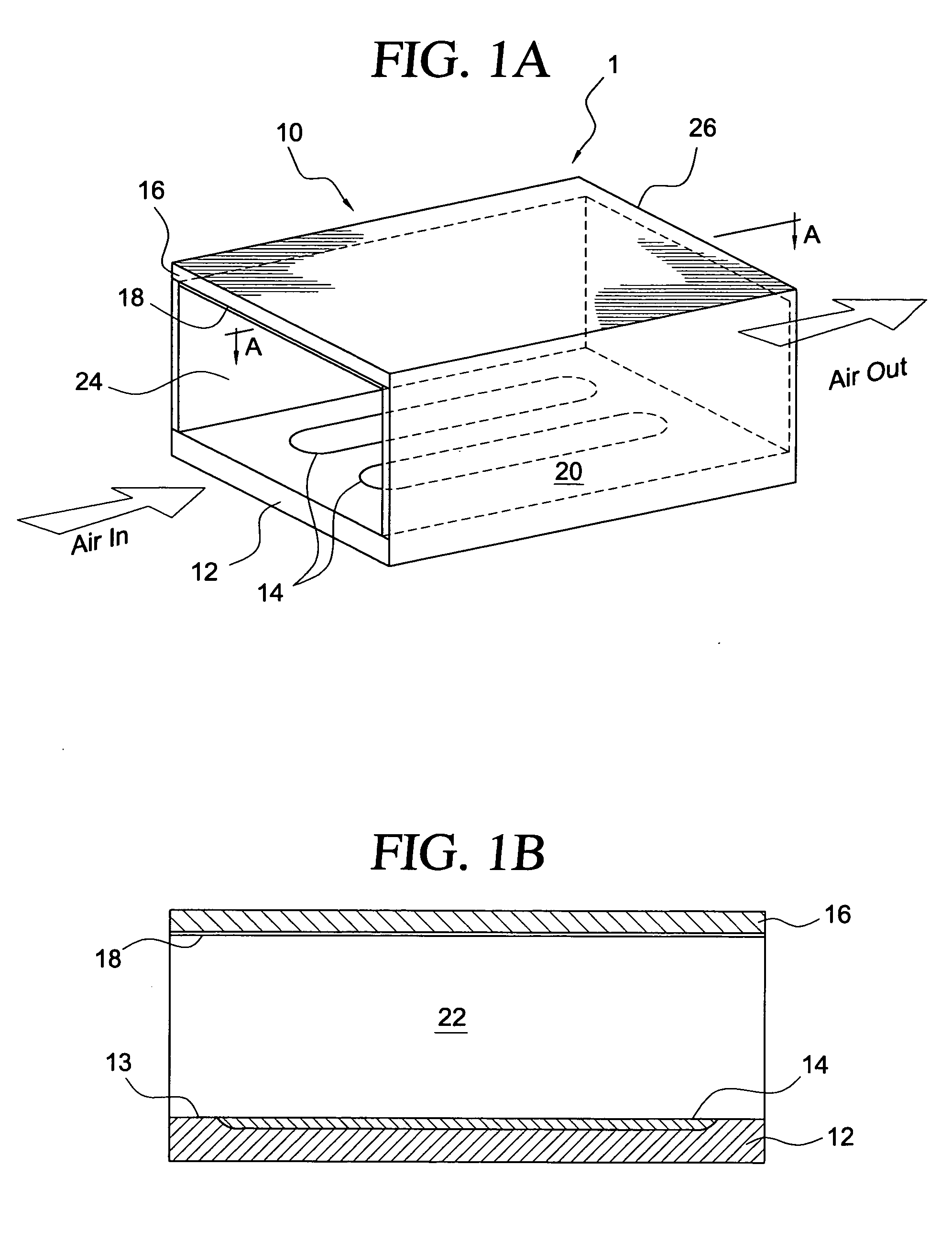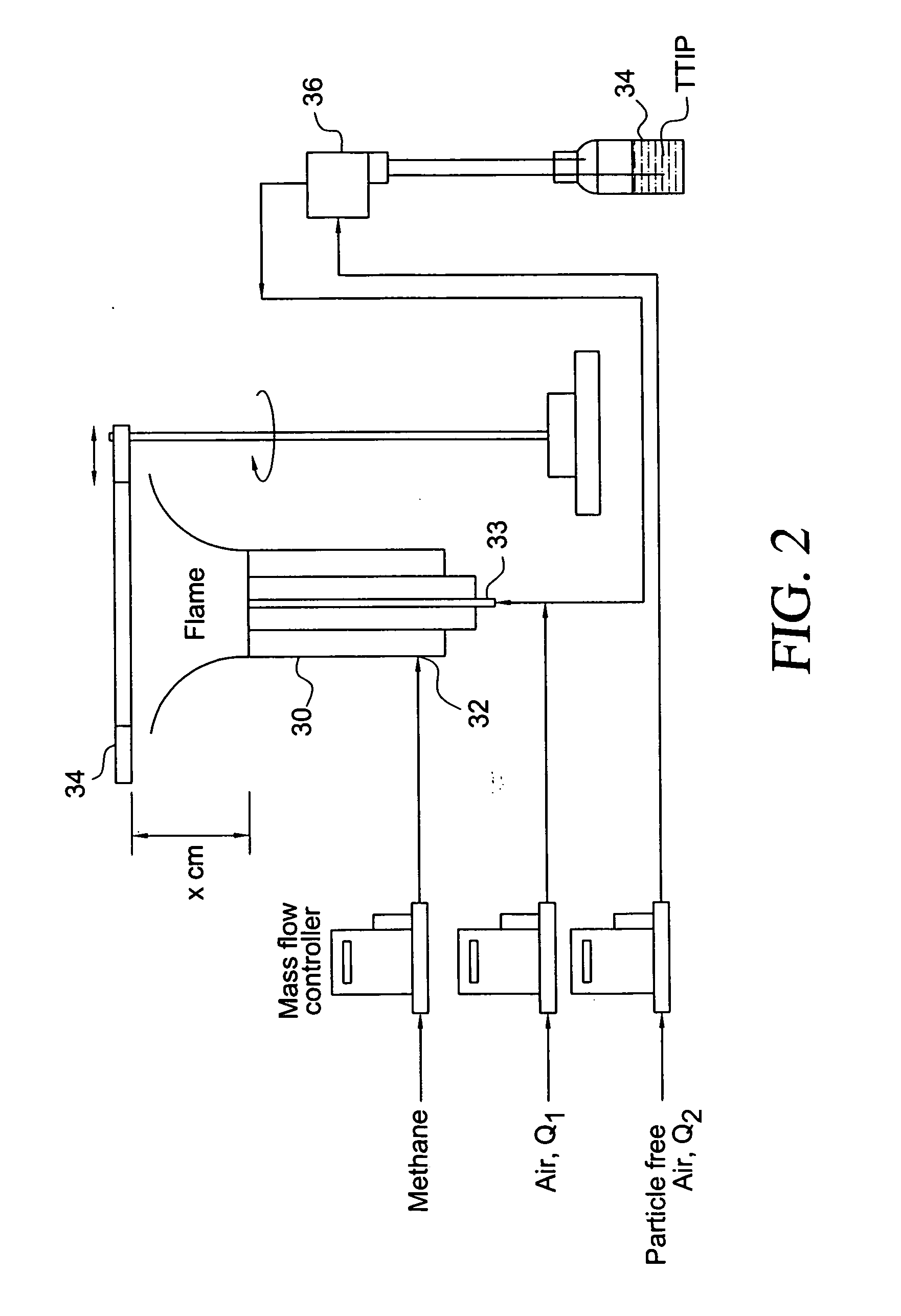Process using compact embedded electron induced ozonation and activation of nanostructured titanium dioxide photocatalyst for photocatalytic oxidation
a titanium dioxide and photocatalyst technology, applied in the field of surface corona reactors, can solve the problems of reducing the biochemical oxygen demand (bod) of some organic streams, partial oxidation of organic pollutants, and the development of problems (problems) to be overcome, so as to achieve atom economy (economy of the atomic level), and less by-products and pollutants
- Summary
- Abstract
- Description
- Claims
- Application Information
AI Technical Summary
Benefits of technology
Problems solved by technology
Method used
Image
Examples
first apparatus embodiment
[0067]FIGS. 1A and 1B show one embodiment of a surface corona reactor 1 with a housing 10 formed of planar bottom wall 12 (“first wall element”), a planar top wall 16 (“second wall element”) and planar side walls 20 and 22, with one open end 24 serving as an air inlet and an opposing open end 26 serving as an air outlet.
[0068] The bottom wall 12 is formed of a ceramic serving as a substrate and presents a first surface 13 having a plurality of surface corona discharge electrodes 14 embedded therein. While the present embodiment as illustrated in FIGS. 1A and 1B is shown as having two spaced corona discharge electrodes 14 in parallel, one or 3 or more such electrodes 14 could be used in accordance with the desired scale and / or capacity. Such embedded surface corona electrodes 14 are described in more detail in U.S. Pat. No. 6,039,816, issued to Morita et al. for “oxonizer, Wafer Purifier and Method of Cleaning an Ozonizer”, the teachings of which are incorporated by reference herein...
example 1
Degradation of Trichloroethylene in a Flowing Air Stream Using Surface Corona in a Flat Plate Embedded Reactor with Titanium Dioxide Coated Surface
[0078]FIG. 4 illustrates schematically the system of reactors used in the example, wherein each reactor included surface corona electrodes 14 embedded in a ceramic substrate facing an opposing surface with a coating 18 flame-deposited nanostructured titanium dioxide. The embedded surface corona electrode was demonstrated to be a compact source of ozone generation and UV light for effective activation of nanostructured titanium dioxide films. A flowing stream of air laden with trichloroethylene was effectively treated using the reactor with an embedded surface corona electrode. Trichloroethylene (TCE, 99.9%) was used as a target compound for establishing the photodegradation potential. TCE was introduced by passing particle-free, organic and carbon free air (Q3) through a midget bubbler 34 (Aceglass, Model 7533, 30 ml), and the residence ...
second apparatus embodiment
[0082] A second embodiment of apparatus in accordance with the present invention, in the form of a tubular reactor, is shown in FIGS. 13 and 14. The tubular reactor 30 is shown as including a tubular first wall element 32 presenting a first reactive surface having a plurality of elongated surface corona electrodes 44 embedded therein, evenly spaced around the circumference of the tubular wall element 32, and having their longest dimension oriented in parallel with the central axis Y of the tubular reactor 1.
[0083] A tubular second wall element 34 is concentric with and surrounded by the tubular first wall element 32. The tubular first and second wall elements 32 define an outer annular space 36 therebetween which is a portion of the “flow passage means” in this second embodiment. The tubular second wall element is fabricated of material transparent to the ultraviolet light emitted by the corona discharge electrode and presents a second surface having a coating 35 of the nanostructu...
PUM
| Property | Measurement | Unit |
|---|---|---|
| thickness | aaaaa | aaaaa |
| roughness | aaaaa | aaaaa |
| temperatures | aaaaa | aaaaa |
Abstract
Description
Claims
Application Information
 Login to View More
Login to View More - R&D
- Intellectual Property
- Life Sciences
- Materials
- Tech Scout
- Unparalleled Data Quality
- Higher Quality Content
- 60% Fewer Hallucinations
Browse by: Latest US Patents, China's latest patents, Technical Efficacy Thesaurus, Application Domain, Technology Topic, Popular Technical Reports.
© 2025 PatSnap. All rights reserved.Legal|Privacy policy|Modern Slavery Act Transparency Statement|Sitemap|About US| Contact US: help@patsnap.com



